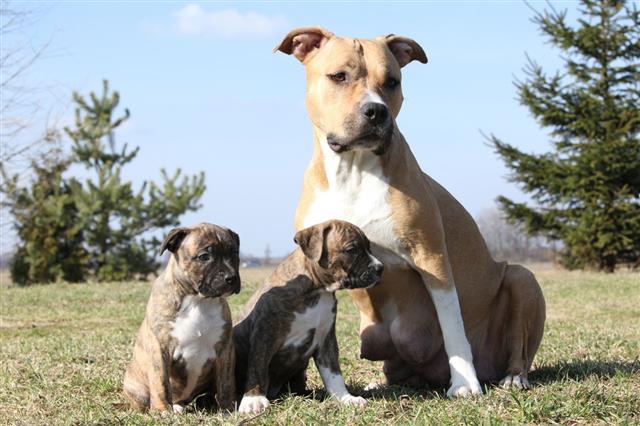
Is your pet she dog about to become a mommy? Do you want to educate yourself about the various stages of dog labor so that you can help her through this time? Well, read this article and find out…
It is beautiful to be able to give birth to a new life, be it a human or an animal…and trust me, witnessing it with your own eyes, is a beautiful experience in itself, (though some parts are a little …), but when you see that little pup come out of your pet, it truly is a moment you will remember for the rest of your life. Speaking of the stages of dog labor, there are 3 stages when a dog is in labor. The overall gestation period of a dog is about 2 months, approximately between 58-63 days. The stages of pregnancy are the same for every breed, but it is completely normal for a toy breed to deliver about a week early, and for larger breeds to have a slight amount of delay in delivering the puppies. But then, if you see that it has been more than 69 days since your dog was bred and the pups are not out yet, you must get in touch with your vet as soon as possible. As for now, let us have a look at the various stages of labor in a dog.
Stages of Canine Labor
You would be happy to know that almost 98% of female dogs successfully give birth to puppies without any ‘human’ interference. Which means that there are high chances that you wouldn’t have to worry about the delivering part. It is advisable to have a rectal or oral thermometer to check her temperature on a regular basis. Usually her temperature would be between 101-102.5° F. The body temperature will usually drop to less than 100°F when she is ready to give birth to the pups.
Stage 1: Dilation of the Cervix
This is the early stage of dog labor when you may notice extreme restlessness and discomfort in your dog’s behavior. She will either be shivering, breathing heavily, or may even vomit at this stage. This is happening due to the dilation of the cervix and the beginning of the contractions in the uterus which can be really painful. This stage can last anywhere between 6-18 hours. Now, different dogs react in different ways, while some would keep whining, others might just start building a nest and find themselves a comfortable and quiet corner to give birth to the baby.
Stage 2: Contractions and Birth
Once the cervix has completely dilated, the dog enters the next stage of labor wherein the uterine contractions begin to get more forceful and the water sack bursts out. This is when the dog gives birth to the pups and also expels the placentas from her body. Pups take birth within the gap of half an hour usually, but at times it may take as long as 4 hours to give birth to the next baby if the mother wishes to take some rest before pushing out the remaining pups. Once the pup comes out, the dog tears their sac and starts licking the baby so that they can breathe properly. She also bites off the umbilical cord with her mouth. Though the chances are rare, but if she doesn’t do that, you should go ahead and help her with the tearing of the sack and cleaning the pup’s face, especially the nose and the face.
Stage 3: Delivering the Placenta
Usually the mother dog keeps ongoing back and forth to stage 2 and stage 3. If she is delivering many pups, she might deliver one pup at a time and deliver the placenta after that. Many a time, she delivers all her pups first and then the placenta is expelled from the body, the contractions in the uterus still take place and the remaining body fluids inside the body including the placenta and blood come out.This stage follows after the birth of the pups wherein placenta and other body fluids are expelled while the mother takes rest and prepares herself to deliver the next pup, or if she has delivered all the pups and is clearing out her body.
As mentioned earlier, the success rate of a normal birth among dogs is 98%, so you really need not worry much. However, you can definitely help your dog by giving her a quiet place to give birth to puppies in peace. A whelping box would be a good option in this case and you can put some towels in it so that the place becomes cozy enough for your dog. Make sure not to be loud and excited around the dog and she might find it uncomfortable. Also, if you are calmly trying to assist your dog with the birth, make sure that you don’t pull the pup out holding its legs or head. Always hold the pup above the legs or from the chest. As a precaution, you can also keep yourself ready in case you would have to take your pet to the vet. This could happen if the dog isn’t giving birth even if it has been more than 69 days, or the gap between one pup and other is more than 4 hrs. Nevertheless, it is always best to consult with your vet about your pet’s individual case, beforehand.




